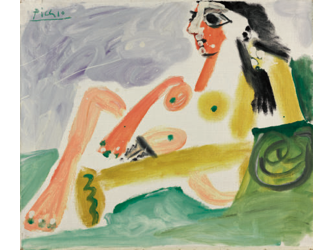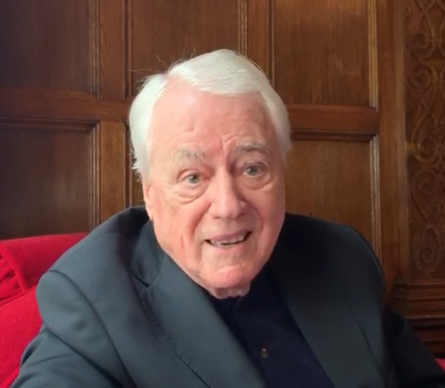Soft power
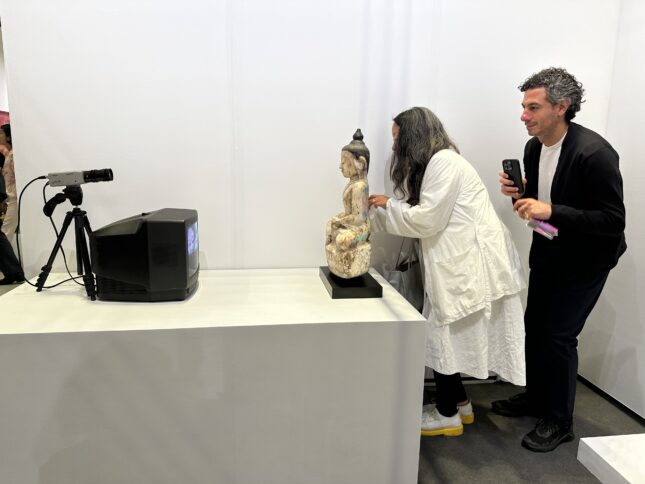
Nam June Paik @ Frieze Seoul
Power struggles in Asia have never been as significant as they are today in matters of soft power. More specifically, in the current art market the question is to know what city will be next in line to shine the brightest.
Two countries
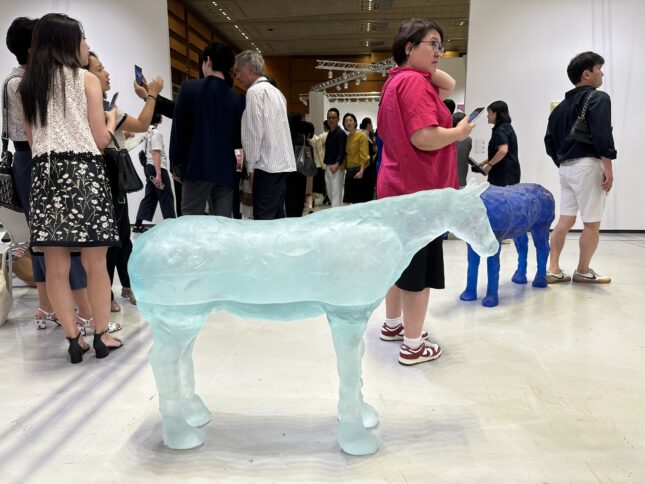
Ugo Rondinone @ Frieze Seoul
In this battle of sophistication there are two cities, and in fact two countries, that are going head to head. In one corner there’s Hong Kong, at the forefront of the Chinese giant with the large-scale fair Art Basel Hong Kong that takes place every March (177 galleries in 2023. See here the report about the last Art Basel Hong Kong). In the other corner, since 2022, there’s been Korea with its capital Seoul and its offering of Frieze Seoul, younger sister to the Frieze London fair. Its first edition was only a trial run due to the fact that entry into the country was subject to public health restrictions at the time.
Frieze Seoul

From 6 to 9 September 2023 the international Korean fair assembled 120 galleries, 50% of which were of Asian origin. Hong Kong and Seoul share an important similarity: they are both free ports, with tax exemptions for the trade of artworks (1). As the head of an influential Chinese museum observes: “everybody knows there are major political tensions in Hong Kong. This does not play in the favour of the Sino-Swiss show. However, Asia is a vast continent where there are ever-growing numbers of art fans. There’s space for two international fairs over the course of the year.”
The mayor of Seoul
In Seoul, the mayor Oh Sehoon came especially to attend the opening of the Asian Frieze. He says: “We want to turn Seoul into an artistic hub. We’ve extended the show into a week of art around the city, with the addition of art, design and fashion exhibitions. In Korea, we’re hoping to develop the creative industries in a transition that will follow on from our manufacturing output.”
Patrick Lee
The head of the fair, Patrick Lee, confirms that the local authorities are giving the project ample support. He adds: “here there is a very large core group of collectors and a significant number of private museums, too, which creates a first-rate platform.”
To Seoul’s disadvantage, it could be noted that the inhabitants aren’t too familiar with foreign languages and travelling from one site or area to another in the city is not easy. But the Korean capital has many advantages as an epicentre of art in Asia.
The Leeum museum
Sungwon Kim is deputy director of what is probably the most powerful museum in the country, the Leeum Museum, created on the initiative of the Samsung company. Inaugurated in 2004, in was designed by three global architecture stars, Rem Koolhaas, Jean Nouvel and Mario Botta. She confirms that: “for a long time there has been a buzzing local art scene. Frieze Seoul is just revealing this activity internationally.”
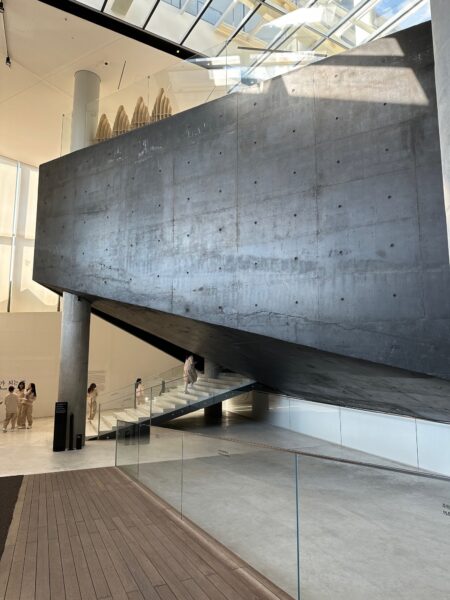
Leeum Museum
Thaddaeus Ropac
The Austrian-French gallerist Thaddaeus Ropac has had a branch in Seoul for the past two years now, in a vast space measuring 200m2. “Seoul is a unique artistic phenomenon in Asia with a very radical avant-garde since the 1960s, which has acquired a large following in the same society. When you visit collections here you also see they have been acquiring European and American artworks since the 1980s.” (See here and interview of the Korean collector Elisabeth Chun).
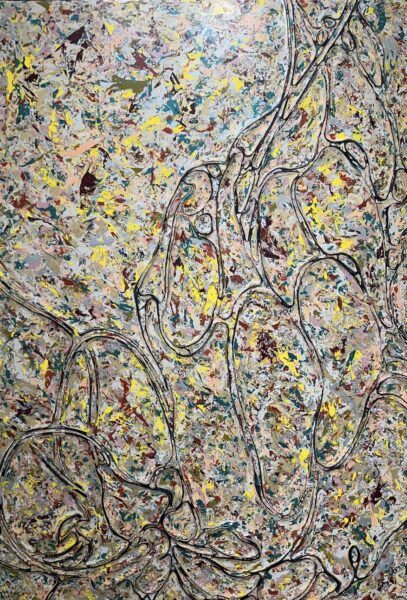
Lee Bul
At their booth they were presenting, among other things, an abstract painting criss-crossed with acrylic and mother-of-pearl by one of the high-profile names in current Korean art, Lee Bul (born in 1964). The artwork, dating from 2023, was sold for 190,000 dollars. According to the gallerist, her prices were less than half that ten years ago.
Kamel Mennour
The Parisian gallerist Kamel Mennour travelled to Frieze Seoul with three works, by one of the pillars of Korean art, who lives in Japan, conceptual artist Lee Ufan (born in 1936). Those three works have already sold and the large-scale painting made with the help of a large paintbrush that becomes like a landscape positioned in the middle of the canvas was on sale for close to a million euros. Lee Ufan’s prices have multiplied threefold in five years according to Kamel Mennour.
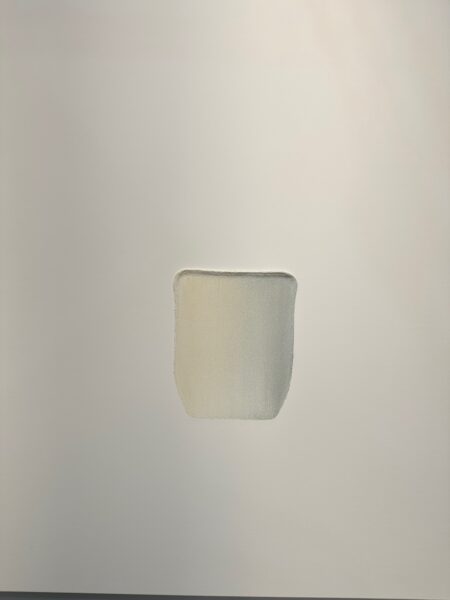
Lee Ufan
He was the subject of a retrospective that travelled to Japan in 2022-2023(See here the report about Lee Ufan in his studio) and which will be presented at the Hamburger Bahnhof museum in Berlin at the end of October.
Gangnam style
Frieze Seoul is being held in the luxury district of Gangnam, which gave its name to the Korean smash hit of 2012, “Gangnam Style”. The video for this song was watched 4.8 billion times on YouTube (2). This early feat of what is now called K Pop is the subject, just next to the fair, of a large and explicit sculpture in bronze featuring two giant crossed arms, the singer’s famous stance.
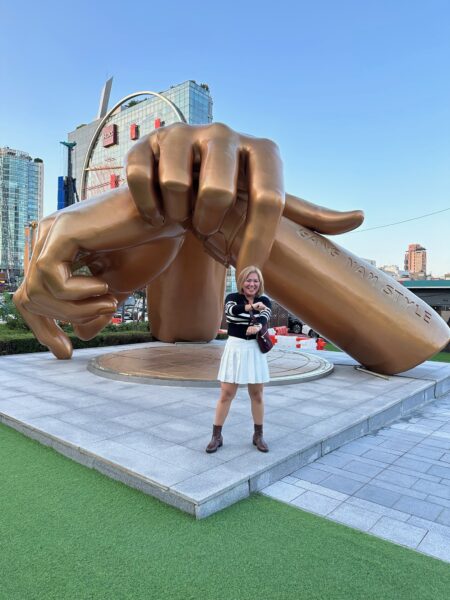
Monument to Gangnam style
Tourists come to gather religiously at the site. It should be said that K culture has become an impressive planetary phenomenon. The most famous group in this genre, BTS, has already made an economic impact valued at 3.6 billion dollars (2).
K Pop
Fiona Kae the author of a book on the explosion of this phenomenon(3) says : “This movement is explained by a Korean society that is very fast, very digital, open to international novelties. It is also a highly professional industry. K Pop is not just about the music, it’s dance, fashion, videos. A global package. The arrival of Frieze Seoul is very meaningful. The pop phenomenon is spreading into the visual arts.”
Tina Kim
Tina Kim, with the gallery that bears her name in New York and Seoul, is one of the influential voices in Korean art. She confirms: “Korean pop culture, music, the entertainment industry… all have an impact on how the art is received internationally. There is currently an exhibition at the Guggenheim museum in New York, ‘Experimental Art in Korea: 1960-1970’, dedicated to the country’s avant-garde. Next October the Philadelphia Museum will be exhibiting around thirty Korean contemporary artists. The Hayward gallery in London will be showcasing one of the current Korean artists who is strongly represented internationally, Haegue Yang (born in 1971) next year. At the booth we are presenting the work of Mire Lee which was displayed at the latest Venice Biennale and now at the New Museum in New York.”
Mire Lee
Her pieces, organic abstract forms that seem to be part of a stage set for the end of the world, like in the large-scale installation of her New York exhibition, were on sale for around 20,000 dollars. One of the frontrunners of the new K wave… There are lots of green lights ahead for Korean contemporary art.
K culture and figures
As for the results of the fair, the sales figures are difficult to analyse. The Korean press has said that a Pumpkin by Yayoi Kusama was bought at Zwirner for 5.5 million dollars. But more generally, the first results from the galleries that have been quickest to announce them indicated a majority of artworks sold for around or less than 200,000 or 300,000 euros. A fairly reasonable barometer for prices in the contemporary art market, similar to what has been seen in recent years. Except, as this museum director says, it is locally considered to be in poor taste to publicize large transactions. Another aspect of K culture.
(1) But in Seoul photographs and print-type editions are subject to taxes.
(2)Les Echos Week End. 8 September 2023. https://www.lesechos.fr/weekend/mode-beaute/k-pop-et-mode-le-mariage-du-siecle-1975767
(3) Make break remix. The rise of K style. Fiona Bae. Thames & Hudson. November 2022.
Support independent news on art.
Your contribution : Make a monthly commitment to support JB Reports or a one off contribution as and when you feel like it. Choose the option that suits you best.
Need to cancel a recurring donation? Please go here.
The donation is considered to be a subscription for a fee set by the donor and for a duration also set by the donor.


